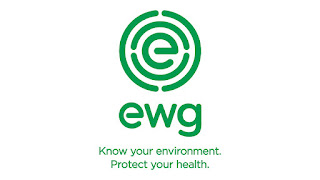Apps to Help You Live Cleaner
The most invaluable tools in my clean living journey include a variety of apps and websites that help me to check ingredients. I'm well aware that there is a lot of green-washing, misinformation, and bias within what is presented to consumers. As much as we would love to trust every source we find online, there is always some degree of partiality in their "facts". That being said, all you can do is be thorough in your research and cross-check as much as possible. I like to use a few different iPhone apps and websites that can pinpoint problematic ingredients. If I get similar results across these platforms, that usually gives me a clearer answer. You also learn a lot the more you research - now I can identify ingredients I want to avoid just by looking at the label! Here are my favorite resources that you can use to help you buy cleaner.
1. Environmental Working Group
EWG has both a guide to cleaning, rating thousands of cleaning products in different categories, and a database devoted entirely to cosmetics, called "skin deep". Both of these have been instrumental in our clean living overhaul. There has been speculation throughout the years on EWG's legitimacy, as there often is with these types of sites. However, I have found their information to be helpful and accurate - but this is just another reason I like to check a variety of sources! They also have an app you can download from the app store, but I found the website easier to work with.
2. Think Dirty
The Think Dirty app is another clean-living staple that shares the ingredients in beauty, personal care, and household products. This site is only available in an app, but it has a pretty extensive database as well. You can scan products or search them manually - my biggest complaint here is that you need a subscription to access certain information and features on the app. Can you still see a product's overall "clean" rating without it? Yes. Are there a lot of things you need to pay to be able to access? Also yes. Not my personal favorite, but a good addition to my informational arsenal.
3. Clearya
This is available as an iPhone app and a browser extension - unlike EWG and Think Dirty, it uses links to products to analyze their ingredients. So I can type in a product's name and search "Amazon" or copy and paste the link itself. It flags anything that could be a potential hazard. My only complaint is that I find it not super user-friendly and it doesn't always say exactly what ingredient is a concern or why. For example, I occasionally get a warning saying that the product contains "fragrance, which is a general term and does not disclose the actual ingredients used". However, I know that particular product uses natural and not artificial fragrance. So it's nice that Clearya is taking the better-safe-than-sorry approach, but you do need to cross check with other apps as well.
4. Yuka
Yuka is a great app for beauty products and food, which does not get covered in the other resources I've used! However, it only rates these things, so it misses cleaning and household products that are equally as important in living a cleaner overall life. It has a pretty extensive database, but I have definitely come across my fair share of products that were not yet analyzed. I like the ability to simply scan a barcode and the score out of 100 aspect - it's a nice extra app to utilize but couldn't be the only one you used.
5. Made Safe
Madesafe.org is a product verification program focused on ingredient safety and sustainability. It's not nearly as extensive as these other tools since they are certifying products one by one in various categories. However, they have a catalog of products ranging from apparel to household to baby products. Definitely worth checking out if you don't know where to start to find a particular clean product.
6. Bobby Approved
This is an app available both on the Apple and Google Play stores, that is used to scan food products. Overall, it is highly rated by users and the fact that it is free is a huge bonus. As always, you have to be wary of some degree of subjectivity, but for the most part, it is well trusted. To be "Bobby Approved", ingredients must be: Free of seed oils. Free of refined or artificial sugars. Free of harmful preservatives. Free of GMO’s. Free of artificial or “natural” flavors. Free of harmful pesticide and chemicals. Free of artificial food colorings. Free of ultra processed ingredients. Free of harmful toxins. Free of harmful fragrances.
7. Your own common sense!
Once you start to learn what chemicals and ingredients to stay away from, just looking at a product's label can be all you need to identify a potentially toxic choice. Artificial fragrance, Formaldehyde, Mercury, 2-Butoxyethanol (2-BE), parabens, and phthalates are just a few examples of ingredients you can spot and avoid! You'll be surprised how much you can learn through the course of your own research.
Follow us on Instagram for more clean content!





Comments
Post a Comment
Let us know what you think!